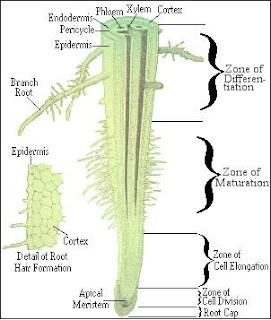Jamur yang menginfeksi semut akan tumbuh memanjang di kepala sampai melepaskan spora dan korbannya menjadi seperti zombie yang hanya diam menggigit bagian bawah daun.
KOMPAS.com - Peneliti temukan empat spesies jamur baru yang bisa mengubah semut menjadi zombie di Amazon. Penelitian yang terbit di jurnal PLoS One itu menunjukkan kalau jamur Ophiocordyceps unliateralis bersifat parasit dan dapat hidup di empat spesies semut (Camponotini sp.) di daerah Zona da Mata, Brazil.
Semut terinfeksi ketika mereka bersentuhan dengan spora yang dilepaskan jamur. Dalam waktu seminggu, semut akan berubah menjadi seperti zombie. "Tingkah laku semut berubah. Mereka menggantung di daun dengan menggigit bagian bawah dedaunan belukar," jelas Profesor David Hughes dari University of Pennsylvania yang juga pemimpin peneliti.
Hughes juga menjelaskan jamur akan tumbuh di kepala semut menjadi seperti antena dan melepaskan sporanya ke udara. Spora itu jatuh ke tanah atau terbawa hujan sehingga dapat bersentuhan dengan semut lain.
Temuan jamur yang membuat semut jadi zombie ini bukan pertama kali. Pada tahun 2009, Hughes menemukan semut zombie di Indonesia. Semut-semut zombie tersebut tergantung pada daun setinggi 25 cm di atas tanah pada lingkungan dengan kelembapan 95 persen--kondisi yang sempurna bagi jamur untuk tumbuh.
Pada spesies-spesies yang ditemukan di Amazon, Hughes menemui perbedaan ukuran dan bentuk. Dua spesies jamur punya spora kedua yang membuat mereka punya kesempatan lebih banyak untuk menempel pada semut. Jamur-jamur baru ini, menurut Hughes, hanya berefek pada spesies semut tertentu saja.
Para ilmuwan tidak melihat kesempatan untuk membuat pestisida dari jamur ini. "Penelitian menunjukkan kalau jamur ini hanya menyerang spesies tertentu. Kalau hama semut berasal dari banyak spesies, pestisida tersebut tak ada gunanya," kata Steve Shattcuk dari SCIRO Ecosystem Sciences.
Hughes selanjutnya berencana pelajari jamur penyebab zombie di Kolombia, Guyana, Brazil, Peru, Malaysia, Papua, dan Australia. (National Geographic Indonesia/Alex Pangestu)
Change the Parasitic Fungus Ants So Zombie
The fungus that infects ants will grow elongated in the head to release the spores and the victim became like zombies who just quietly biting the bottom of the leaf.
KOMPAS.com - Researchers discovered four new species of fungus that can turn into a zombie ant in the Amazon. The study, published in the journal PLoS One showed that Ophiocordyceps unliateralis parasitic fungus and can live in four species of ants (Camponotini sp.) In the Zona da Mata, Brazil.
Ants become infected when they come into contact with the fungal spores are released. Within a week, the ant will turn into a zombie. "Ant behavior change. They hang on to biting the lower leaves foliage shrubs," explained Professor David Hughes of the University of Pennsylvania who is also the lead researcher.
Hughes also explained the fungus will grow on the ant's head becomes like an antenna and release spores into the air. Spores that fall to the ground or carried by the rain so it can come into contact with other ants.
Findings fungus that makes ants so zombies are not the first time. In 2009, Hughes found the ant zombie in Indonesia. Zombie ants are dependent on the leaves as high as 25 cm above the ground in an environment with 95 percent humidity - perfect conditions for fungus to grow.
In species that are found in the Amazon, Hughes met the size and shape differences. Two species of fungi have spores that make them have two more chances to stick to the ants. This new fungus, according to Hughes, only have an effect on certain ant species.
The scientists do not see an opportunity to make pesticides from this fungus. "Research shows that this fungus attacks only certain species. If the pests come from many species of ants, pesticides were not any good," said Steve SCIRO Shattcuk of Ecosystem Sciences.
Hughes further plans to study fungi that cause the zombie in Colombia, Guyana, Brazil, Peru, Malaysia, Papua, and Australia. (National Geographic Indonesia / Alex Pangestu)




Comments
Post a Comment
Isi Komentar kamu untuk Posting ini!!